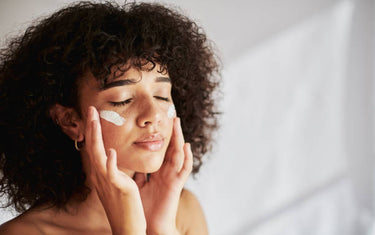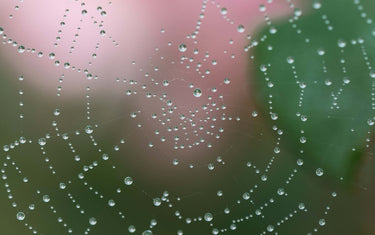5 min read / 23 July 2024 / yasmin sharp
Natural Beauty: Essential Oils for Glowing Skin
Discover the benefits of essential oils for achieving radiant and healthy skin in our comprehensive guide.
Share this post

Are essential oils good for the skin?
Which are the best skincare essential oils?
How to use essential oils for skin
We all want good skin – but the tricky part is finding the right treatments that will give it a healthy, long-lasting glow.
Using essential oils for skincare could be an option, and if you are struggling to find the right product to suit your skin type, choosing the natural option might work for you.
As we’ll explain in this article, these claims are also backed by scientific research, so if you are curious about using an essential oil for skin treatments, but are not sure where to start, you can use this as a beginner’s guide.
Are essential oils good for the skin?Essential oils have been used for centuries in skincare, with people from all around the world benefiting from their natural properties. Whilst they are known for their aromatherapeutic qualities, you can also use essential oils as an integral part of your skincare routine. Some oils provide antibacterial and anti-inflammatory properties to help reduce scarring, with others working to counteract dry or oily skin. As always, when using an essential oil for the first time topically, you should complete a patch test to ensure it is suitable. |

Which are the best skincare essential oils?
Some of the best essential oils that are good for the skin include:
Ylang ylang oil helps to balance sebum production
Your body naturally produces an oily substance called sebum which lubricates the skin to protect against friction, giving it a stronger barrier against moisture.
It is believed that ylang ylang oil helps to balance sebum production, making it the perfect essential oil for good skin, and it benefits people who struggle with dryness, keeping it looking young and revitalised to combat the signs of ageing.
Treat acne and oily skin with tea tree oil
Tea tree oil contains natural antibacterial and antifungal properties that can decrease skin surface fungus, viruses and bacteria. [1]
It can be a helpful complementary treatment to use alongside prescribed acne medication, working to prevent and control breakouts.
You can also apply tea tree oil for minor wounds, cuts and skin conditions, particularly those caused by bacteria. [2]
Lavender essential oil is an effective anti-inflammatory agent
Another top-rated essential oil for skin is lavender oil due to its significant anti-inflammatory qualities. [3]
While it is commonly known as a selfcare staple that can improve sleep patterns and ease stress and anxiety, it also has a lot to offer your skin.
Once diluted with a carrier oil and applied it can reduce redness and blemishes, which may be why many people believe it is the best essential oil for face treatments.
Regenerate cells and boost skin elasticity by using neroli oil
According to the results of a study published in 2012, neroli essential oil demonstrated strong antibacterial, antifungal and antioxidant activity. [4]
This could make it useful for treating skin irritations and reducing acne breakouts. Its astringent properties could increase the elasticity of the skin, helping it to look and feel brighter and more youthful.
Use Clary sage oil to heal minor wounds and scars
If your skin produces an excess amount of sebum that makes it look and feel too oily, then you could try including clary sage essential oil in your daily skincare routine.
The oil’s antibacterial properties could have a positive impact on some strains of bacteria, such as Staphylococcus. [5]
This can also make it useful as a treatment for minor wounds and injuries caused by surgery, burns or diabetes.
Give your skin the restorative qualities offered by sandalwood oil
Many people enjoy the warming aroma of sandalwood, making it a favourite in aromatherapy circles.
But when it comes to essential oils that are good for the skin, the oil also has restorative properties to offer too.
For example, it can be used to reduce inflammation caused by dry skin, with one study finding that it successfully treated patients with paediatric eczema/atopic dermatitis. [6]
Geranium essential oil is ideal for acne and skin irritation
The antibacterial, antiseptic and antimicrobial properties of geranium oil make it one of the standout essential oils for skincare.
A 2017 review of studies suggested that topical application could allow these natural properties to reduce acne breakouts, skin infections and irritation. [7]
The oil’s anti-inflammatory properties could also mean it could be effective at treating certain skin conditions that cause swelling.

How to use essential oils for skin
To include essential oils into your skincare routine, try the following:
- Complete a patch test: Mix a small amount with a carrier oil and apply it to the inside of your elbow. Cover with a plaster and leave for at least 24 hours. If you do not experience any irritation or allergic reaction, you should be able to continue using the oil without any issue.
- Follow the correct dilution ratio: The recommended dilution ratio is to blend one tablespoon of carrier oil with 2-3 drops of essential oil before application. If you have sensitive skin, you may want to dilute the mixture further to reduce the potency.
- Apply gently: When applying essential oils to your skin – especially your face – use gentle, circular motions to massage it into your skin. Avoid applying to sensitive parts of your body, especially around the eyes.
Final thoughts
The natural properties contained in the likes of lavender, tea tree, ylang ylang, clary sage and others make them ideal for use in skincare.
There are some essential oils that are good for the face, or you can pick out an essential for glowing skin to give you an all-round health boost.
When using an essential oil for the first time, always complete a patch test to ensure that it is suitable for your skin type.
[1] C. F. Carson et al. (2006) Melaleuca alternifolia (Tea Tree) Oil: a Review of Antimicrobial and Other Medicinal Properties https://www.ncbi.nlm.nih.gov/pmc/articles/PMC1360273/
[2] Karen B. Chin et al. (2013) The Effect of Tea Tree Oil (Melaleuca alternifolia) on Wound Healing Using a Dressing Model https://www.liebertpub.com/doi/abs/10.1089/acm.2012.0787
[3] Shweta Kajjari et al. (2022) The Effects of Lavender Essential Oil and its Clinical Implications in Dentistry: A Review https://www.ncbi.nlm.nih.gov/pmc/articles/PMC9357533/
[4] A Haj Ammar et al. (2012) Chemical composition and in vitro antimicrobial and antioxidant activities of Citrus aurantium l. flowers essential oil (Neroli oil) https://pubmed.ncbi.nlm.nih.gov/24163946/
[5] Monika Sienkiewicz et al. (2015) The effect of clary sage oil on staphylococci responsible for wound infections https://www.ncbi.nlm.nih.gov/pmc/articles/PMC4360007/
[6] Manju Sharma et al. (2018) East Indian Sandalwood Oil Is a Phosphodiesterase Inhibitor: A New Therapeutic Option in the Treatment of Inflammatory Skin Disease https://www.frontiersin.org/journals/pharmacology/articles/10.3389/fphar.2018.00200/full
[7] Ané Orchard et al. (2017) Commercial Essential Oils as Potential Antimicrobials to Treat Skin Diseases https://www.ncbi.nlm.nih.gov/pmc/articles/PMC5435909/









